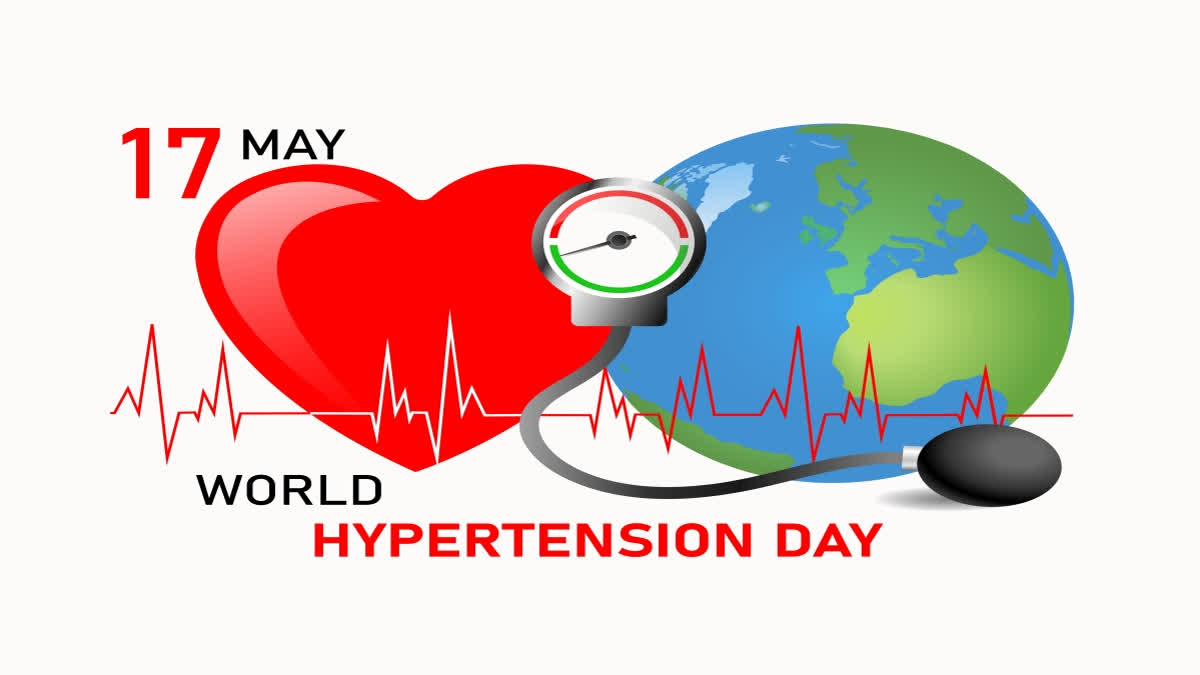New Delhi: With the theme 'Measure Your Blood Pressure Accurately, Control It, Live Longer', the World Hypertension Day 2024 is observed on May 17. It is dedicated to spreading awareness about the importance of monitoring blood pressure and the risks associated with high blood pressure.
Hypertension is the number one risk factor for heart disease, stroke, renal complications, and premature death. High blood pressure that raises the risk of heart disease, stroke, renal complications, and premature death. While most people do not have any symptoms of high blood pressure, it can lead to serious complications if left untreated. Hypertension can be prevented and managed by regularly checking blood pressure and taking medication if prescribed.
Former President of Indian Medical Association (IMA) Dr JA Jayalal told ETV Bharat that hypertension is particularly challenging because it is an asymptomatic, silent killer and often remains hidden until caught during monitoring or evidenced in a hypertension-associated disease such as heart failure or stroke.
“Undiscovered and untreated, hypertension significantly increases the risk of developing cardiovascular, brain, and kidney diseases,” said Dr Jayalal.
He said that eating a heart-healthy diet with less salt, getting regular physical activity, maintaining a healthy weight as well as limiting alcohol and smoking can control hypertension.
History and Significance of World Hypertension Day: World Hypertension Day was first established by the World Hypertension League (WHL) on May 14, 2005. Since 2006, the day is being observed on May 17 annually with an aim to raise awareness about hypertension and its harmful effects on health.
The day aims to educate people about the serious complications of high blood pressure. The day emphasises on raising awareness about the importance of monitoring blood pressure and to promote the prevention and treatment of hypertension.
What is hypertension and its factors: Hypertension (high blood pressure) is when the pressure in blood vessels is too high (140/90 mmHg or higher). It is common but can be serious if not treated. People with high blood pressure may not feel symptoms. The only way to know is to get your blood pressure checked.
Older age, genetics, being overweight or obese, not being physically active, high-salt diet, and drinking too much alcohol are some of the major causes of having high blood pressure.
Symptoms and corrections: Most people with hypertension don’t feel any symptoms. Very high blood pressures can cause headaches, blurred vision, chest pain and other symptoms. Checking blood pressure is the best way to know if anybody has high blood pressure. Some of the major symptoms of high blood pressure include severe headaches, chest pain, dizziness, difficulty breathing, nausea, vomiting, blurred vision or other vision changes, anxiety, confusion, buzzing in the ears, nosebleeds and abnormal heart rhythm.
Lifestyle changes like eating a healthier diet, quitting tobacco & alcohol and being more active can help lower blood pressure. However, medications may be required on many occasions.
Indian Scenario: An estimated one in four adult Indians suffers from hypertension, only 10 per cent of whom have their blood pressure under control. To help India reach its target of a 25 percent reduction in the prevalence of raised blood pressure, the India Hypertension Control Initiative (IHCI) was launched in November 2017, with the Government of India and state governments providing leadership, and the World Health Organization (WHO) India providing technical assistance.
The IHCI was implemented in 141 districts across 25 states, covering 303 million people, and resulted in 21579 health facilities providing support for those suffering from hypertension. Over the past four years, 12.5 percent of India’s estimated hypertensive adult population have been enrolled in the IHCI, with a 72 percent patient retention rate. This has led to the number of patients with controlled blood pressure increasing from 65240 in the first quarter of 2019 to 777243 in the first quarter of 2022.



